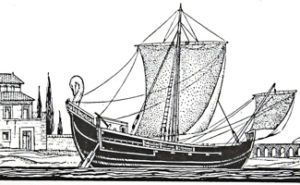History of Dover and the age of the Romans
The town of Dover is long known for its historical significance and it is a place which has had pre-historic significance and a place with early inhabitants and settlements. The white Cliffs of Dover is very significant as it is an evidence of the pre-historic ages, where during a time, when the entire area was submerged by sea, the sea creatures got embedded in the ocean floor. Once the flood was over, the cliffs came out of the sediments, made of limestone which constituted of the sea urchins and other sea creatures.
The history of the town of Dover runs into the stone age where the early settlers brought in with them corn and other domesticated animals around 6000 years ago and settled beside the river and started a settlement. These Stone Age farmers used a boat to cross the river in Dover. The Britain’s earliest known shipwreck which dated back to about 1100BC had evidence of the tools which were in use by the inhabitants of the time like bronze tools, scrap metal and weapons. There were over 45 Bronze age sites, which are mainly burial sites and these have been found locally. However, there has been very little evidence of the iron age settlements. It is believed that there is more to be discovered. A few decades back, when a construction was occurring at the town centre, there was a discovery of a large wooden boat which dated from the Bronze Age. The structure was found in a deep waterlogged hole.

During the Roman era, the British had a port which was ruled by the Roman Empire and it was a thriving town. It is believed that at least 5 hectares of area was covered along the Dour valley. The town was called as Dubris which meant water in British. This town of Dover was a strong Roman hold with a large harbour and was flanked by 2 light houses and three successive forts. One of the light houses stands tall even today and is the largest surviving structure of the Romans. There are over 60 sites which have been found from the Roman period. The sites which are open to the public includes the ‘The Roman Painted House’ found at Dover, the Roman fort of Richborough near Sandwich and the Pharos in Dover Castle grounds along with the light house.